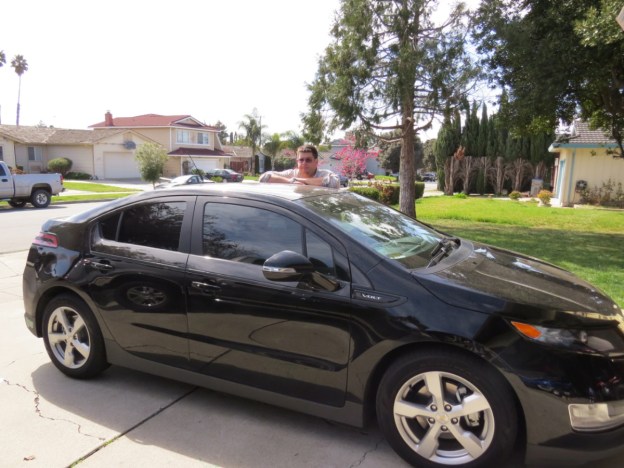 Chevrolet Volt owners are meeting or exceeding the EPA-estimated mileage of 98 MPGe gasoline-free miles − and saving over a grand a year at the pump in the process.
Chevrolet Volt owners are meeting or exceeding the EPA-estimated mileage of 98 MPGe gasoline-free miles − and saving over a grand a year at the pump in the process.
In an official press release, Chevy says the typical Volt owner who regularly charges their vehicle is traveling 900 miles between fill-ups of the gasoline engine that powers the Volt’s on-board generator. That amounts to saving about $1,300 a year in fuel costs.
The overall MPGe gasoline-free miles achieved by Volt owners tallies up to 150 million electric-only driving miles – roughly the distance from Earth to Mars, notes the carmaker.
MPGe, or “miles-per-gallon equivalent ” is a measure of the average distance traveled per unit of energy consumed (gas or otherwise) used by the EPA to compare the consumption of alternative fuel vehicles like the Volt with the fuel economy of conventional internal combustion vehicles. Basically, it says that if said car were to run on gas alone, this is the kind of mileage it would get.

The Volt is capable of driving 38 miles without using any gas by using a full charge of electricity stored in its 16.50-kWh lithium-ion battery. When the car’s battery runs low, a gas-powered generator operates to extend the driving range up to another 344 miles on a full tank. If drivers can make it home or to a charging station before the juice runs out – which is becoming easier as the charging infrastructure gets built out – you can avoid having to use any liquid dinosaur.
According to Chevrolet, some Volt owners are practically avoiding using gasoline altogether.
“I have driven more than 23,500 miles in my Volt in 21 months, and have been to a gas station twice,” said Brent Waldrep of Auburn Hills, Mich. “The last time, was in August (2012), and I still have about 65 percent of that tank left. I go about 9,000-10,000 miles between fill ups.”
Larry Reed, a Chevy Volt owner in Canyon Lake, Texas said that in addition to a full tank provided by the dealer when he purchased his Volt, he’s only filled up once in more than 5,000 miles.
Paul Friday of San Jose, Calif., says he gets about 7,000 miles between fill-ups and adds about three gallons of gas to his Volt every three months.
To achieve high electric miles, Volt divers are known to use a variety of different techniques like braking and accelerating gently, to conserve energy and maximize battery power. Using the car’s heated seat feature to stay warm is also a more energy-efficient way to reduce the battery load in cold weather.
Other reported techniques for conserving battery power include warming or cooling the Volt’s cabin while it’s still plugged in and connected to the grid and using the low gear or “L” shifter position for more aggressive motor braking, which helps to recaptures more energy for the battery.
“We’ve seen and heard from our Volt owners that they are achieving fantastic performance numbers with their vehicle as many are beating the EPA label estimates,” said Cristi Landy, Chevrolet Volt marketing director. “Our Volt owners are showing the performance potential of driving electric, and having fun doing it.”


